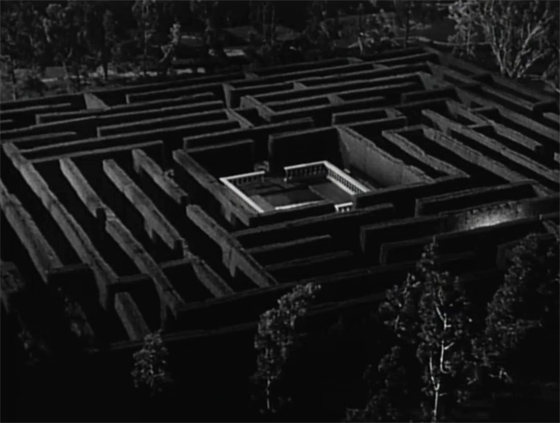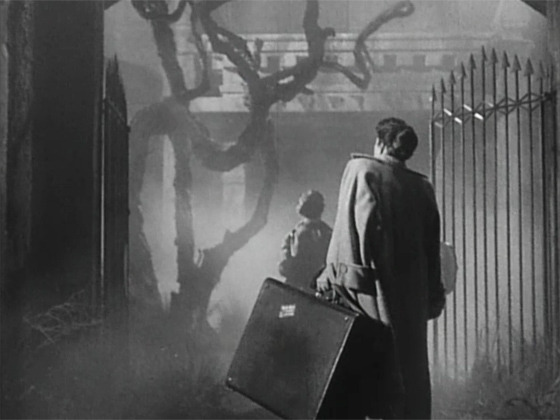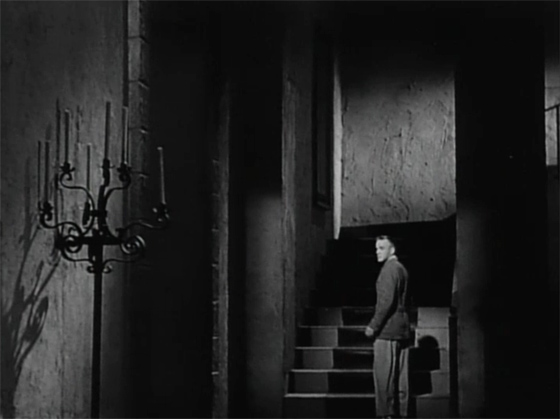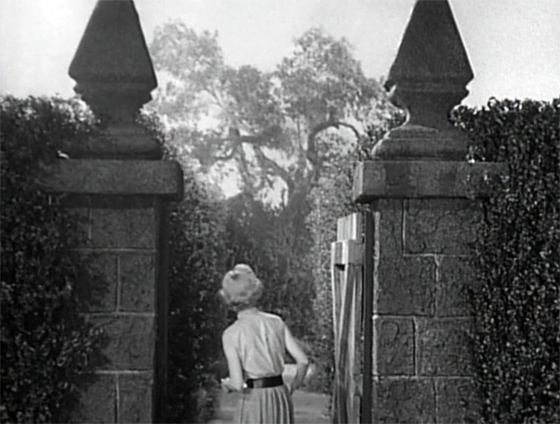
If you’ve ever seen the Douglas Fairbanks version of The Thief of Bagdad (1924), then you love and respect William Cameron Menzies. In the 1920’s Menzies quickly established himself as a first-rate art director, and the Fairbanks vehicle was enlivened considerably by Menzies’ sets, which resembled the exaggerated illustrations of a child’s Arabian Nights storybook, while Fairbanks hopped, skipped, and swashbuckled through every inch of them. In 1929 Menzies won the first Oscar ever awarded for art direction (for The Dove and The Tempest), and he quickly graduated to directing his own films, his first solo directing effort being the visually stunning (if dramatically lacking) H.G. Wells adaptation Things to Come (1936). David O. Selznick put him in charge of Gone with the Wind‘s art direction, for which he won another Oscar, but in the subsequent decades Menzies never quite established himself as a director of note. His best-regarded film is Invaders from Mars (1953), a dream-like, dread-filled science fiction yarn tailored for the Cold War. Less remembered is the film’s companion-piece, 1953’s The Maze. Shot in 3-D, it’s even more surreal than Invaders. It would also be his swan song on the big screen (he died in 1957).

Kitty (Veronica Hurst) and Edith (Katherine Emery) pay an impromptu visit to Craven Castle.
The film is awkwardly narrated by the middle-aged Edith Murray (Katherine Emery), who speaks stiffly to the camera while her head sits peculiarly toward the bottom of the frame – a technique that repeats itself throughout the film, to greater effect in places, as Menzies deliberately emphasizes the outsized walls, doorways, and stairs of Craven Castle that dwarf its inhabitants. (Ever the art director, he doesn’t want you to miss a single detail. The effect is also similar to how Dario Argento art-directed Suspiria; by making the sets enormous, and the actors to appear smaller, the story takes on the aspect of a fairy tale told from a child’s perspective.) As Edith explains, her story begins with the engagement of her niece Kitty (Veronica Hurst) to Sir Gerald MacTeam (Richard Carlson of It Came from Outer Space and The Creature from the Black Lagoon). Though they seem to be in love, when Gerald is summoned away to his ancestral castle due to the death of his uncle, he sends back a brief cable stating that he cannot return, and they must have nothing more to do with one another. Naturally, Kitty defies the order, and travels out to Scotland and Craven Castle with Aunt Edith reluctantly in tow. There she finds that Gerald has visibly aged, and has taken on the demeanor of a cold-hearted tyrant. He demands they leave immediately, but Kitty conspires to extend their stay. Gerald relents, so long as she follows the castle’s strict rules: they must never leave their rooms at night, and never explore the castle’s hedge maze.

Sir Gerald MacTeam (Richard Carlson) ensures that his guests' doors are locked at night.
On the very first night of her stay, Kitty hears a strange shuffling sound outside of her door, and glimpses shadows moving through the light cast underneath it. Shortly thereafter, she sees out her window a glowing light moving slowly through the maze. Worried over her fiancé’s dramatically altered appearance and manner – and the fact that he spends much of his time reading a book called Teratology (which, the film later informs us, is the study of physiological abnormalities) – she begins to suspect that he’s either physically or mentally ill. After an attempt to explore the maze during the daytime is abruptly halted by Gerald, she sneaks out of her room at night with Edith and follows the shuffling noise into the maze, where she finally uncovers Craven Castle’s dark secret. It’s unusual to find a pre-1960’s film which can truly be called Lovecraftian, but look no further than The Maze, whose setup and finale seem to exist in the same mythological universe, though this film is lacking in cosmic horror or nameless dread. (Modern viewers are more likely to find the outré finale ripe for unintentional laughs.) Menzies, this late in his career, is still clumsy with his actors, and his disinterest with dialogue scenes is clear – he simply plows through those portions of the script drearily. Apart from some unfortunate business with bats on strings, leftover from late-period Universal horror, his imagination comes to the fore during Kitty’s nighttime explorations, with the maze itself being such a memorable setpiece that surely it inspired Stephen King’s The Shining, as well as Kubrick’s film (I was also reminded of Pan’s Labyrinth). If you’re charitable toward the unusual nature of the final revelation, you can see that The Maze, much like its sibling Invaders from Mars, is ultimately a dark fable – and, in retrospect, invaluably unique for its era.










